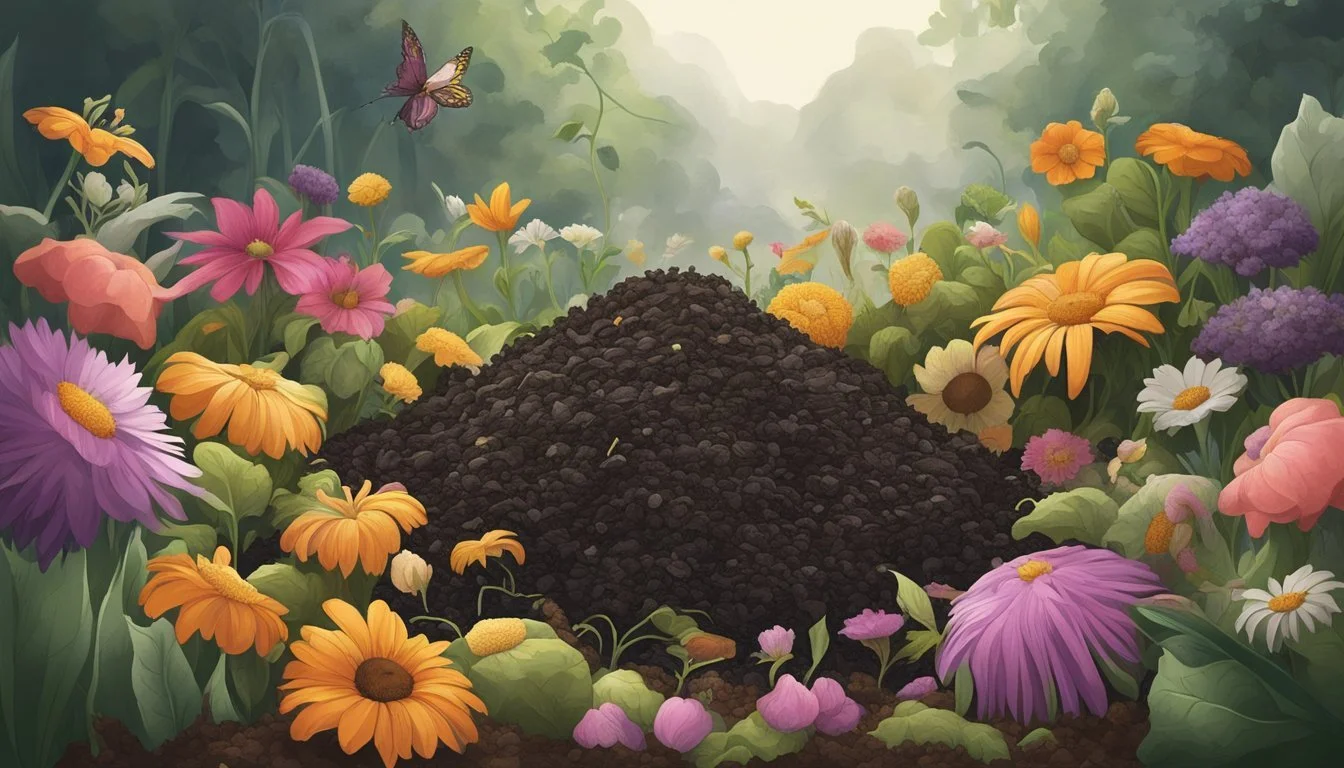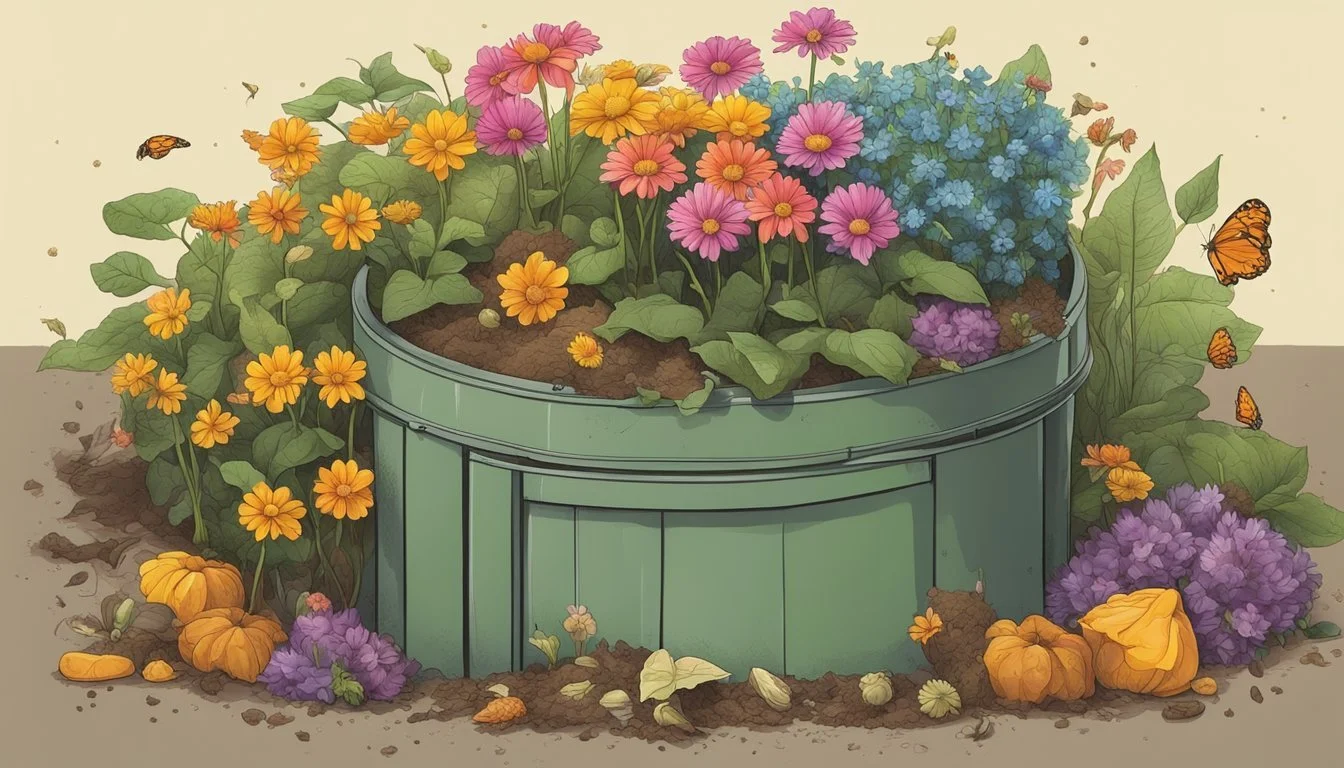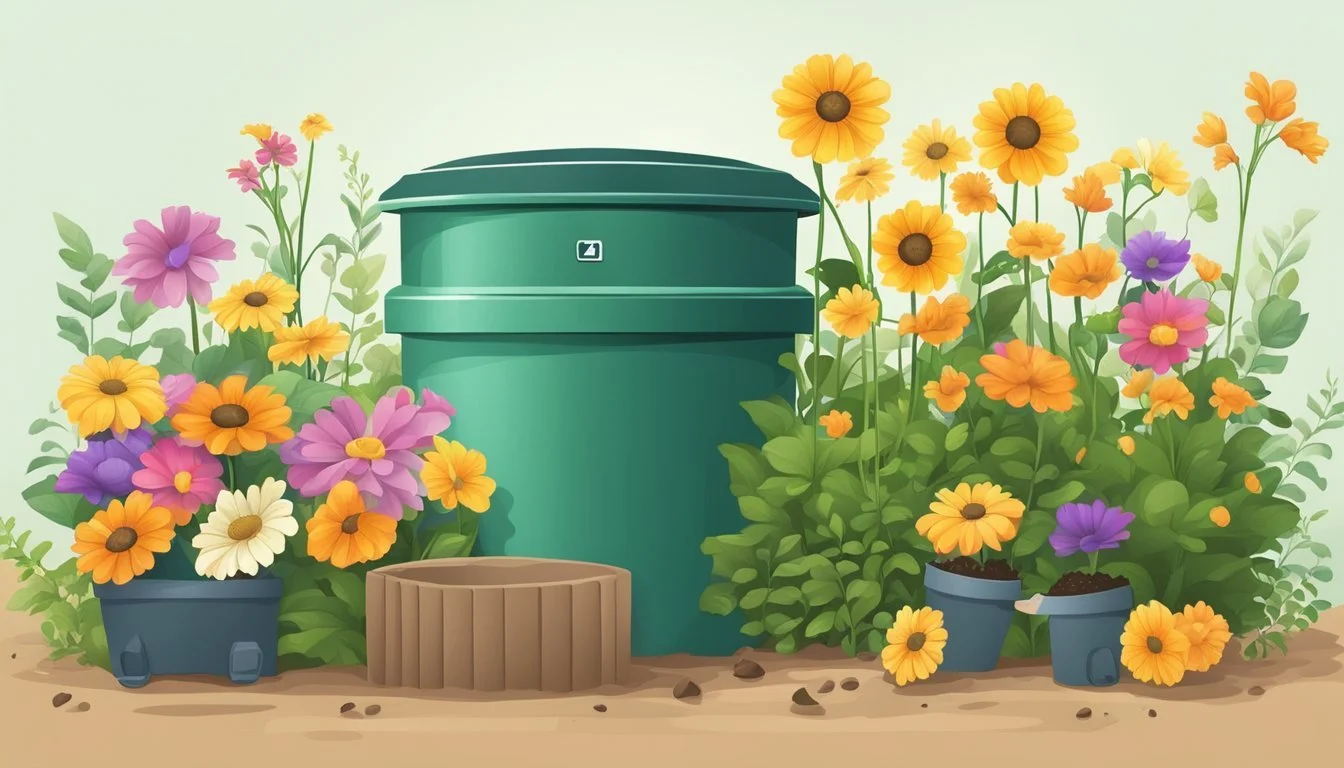Can You Compost Flowers?
Unveiling the Truth About Floral Waste Recycling
Composting is a sustainable practice that transforms various organic materials into nutrient-rich soil amendments. Flowers are among those organic materials that can be successfully composted. They serve as an excellent 'green' component, which adds nitrogen to the compost pile, balancing the carbon-rich 'browns' like leaves and branches. It is important to ensure that flowers added to the compost are free from disease and have not been treated with chemical-based pesticides or fertilizers, as these can disrupt the composting process and potentially harm beneficial microorganisms.
When gardeners add flowers to compost, several factors should be considered to optimize decomposition. Flowers should be broken down into smaller pieces to increase the surface area for microorganisms to work on, thus speeding up the composting process. Additionally, it's essential to remove any non-compostable parts, such as thorns or synthetic decorations, which could cause physical harm or contamination.
Flowers not only contribute to the creation of a balanced compost mix but also help in recycling plant material back into the garden. By composting flowers, gardeners can reduce waste and enhance the fertility of the soil, promoting a more sustainable gardening ecosystem. As flowers break down along with other compostable materials, they decompose into humus, which is full of essential nutrients and beneficial for plant growth.
Benefits of Composting Flowers
Composting flowers offers a range of environmental and gardening benefits, notably in enriching soil nutrients, reducing waste, and enhancing garden health.
Enriching Soil Nutrients
When flowers decompose in a compost pile, they break down into humus, a nutrient-rich material that greatly benefits soil quality. This organic substance improves the soil's ability to retain moisture and nutrients, making those nutrients more readily available to plants. The presence of decaying flowers in compost provides essential nitrogen, an important nutrient for plant growth.
Reducing Waste
Composting flowers is an effective way to reduce the volume of garden waste. Instead of sending floral waste to landfills, where it would take up space and potentially contribute to methane production, composting it at home minimizes one's carbon footprint. By transforming plant-based materials like flowers into compost, individuals can turn what would be trash into a resourceful product, thus lessening the impact on landfills.
Enhancing Garden Health
Integrating compost that includes flowers into a garden supports overall plant health. The use of compost can protect plants from diseases and pests due to its ability to foster beneficial microorganisms in the soil. Additionally, compost acts as a natural fertilizer, adding structure to the soil and creating a nurturing environment where garden plants can thrive. This natural method reduces the need for chemical fertilizers, promoting a more sustainable ecosystem within the garden.
Understanding the Composting Process
The success of composting hinges on a balanced interaction between organic waste materials, microorganisms, and environmental factors that accelerate decomposition.
Decomposition Basics
Decomposition is the process by which organic matter is broken down into simpler forms of matter. For successful composting, green material (high in nitrogen such as grass clippings and kitchen scraps) and brown material (high in carbon such as dried leaves and twigs) must be combined to create a hospitable environment for decomposition. The right mix ensures a steady temperature and optimal decomposition speed.
Temperature: Heat is a byproduct of microbial activity, and compost piles often reach temperatures between 90-140°F.
Moisture: The pile should be moist but not waterlogged, with an ideal moisture level similar to a wrung-out sponge.
Nutrients: The decomposition process enriches the compost with nutrients essential for plant growth, like nitrogen, phosphorus, and potassium.
Chemicals: Avoid adding material treated with chemicals to the compost to prevent contamination.
Role of Microorganisms and Bacteria
In composting, microorganisms, including bacteria, play a vital role by breaking down organic materials. They thrive in warm temperatures and require both oxygen and moisture to effectively decompose the compost materials.
Microorganisms: The primary agents include bacteria, fungi, and actinobacteria.
Bacteria: These are the most abundant and are classified based on the temperatures in which they are most active: psychrophilic, mesophilic, and thermophilic.
Balancing Greens and Browns
For a compost pile to decompose effectively, there should be a balance of green and brown materials, often recommended as a ratio of 1 part green to 2-3 parts brown.
Green Material: Rich in nitrogen, greens include grass clippings, fresh leaves, and fruit and vegetable scraps.
Brown Material: Rich in carbon, browns include dry leaves, straw, paper, and wood shavings.
A balanced compost pile should not emit foul odors and will decompose efficiently, producing a nutrient-rich compost over time.
By understanding these core principles, individuals can optimize their composting efforts, turning waste into a valuable resource.
Suitable Flowers for Compost
When composting, most flowers from the garden and vegetable remains can be valuable additions, providing an organic source of carbon. However, special attention should be given to the state of the flowers to avoid contamination.
Garden Flowers and Vegetable Garden Remains
In a compost heap, garden flowers and remnants from a vegetable garden serve as excellent green materials. They introduce beneficial microbes and help break down organic matter, enriching the compost with key nutrients. Flowers should be free from disease and shouldn't have been treated with herbicides or pesticides.
Green Waste from Fresh and Dead Flowers
Both fresh and dead flowers can contribute green waste to a compost pile. Fresh flower waste provides moisture and nitrogen, whereas dried flower material contributes carbon:
Fresh flowers: Nitrogen-rich, aid in heating up the compost pile.
Dead flowers: Carbon-rich, essential for balancing the compost's nitrogen levels.
Considerations for Diseased or Treated Flowers
It's important to evaluate diseased flowers cautiously. Composting plants affected by mild diseases might be safe if the compost reaches a high enough temperature. However, flowers with severe infections should be excluded to prevent spreading pathogens. Similarly, flowers treated with chemical pesticides or herbicides may need to be omitted or thoroughly rinsed before composting to ensure that harmful residues do not persist. Organic preservatives are preferred for optimal compost health.
Preparing Flowers for Composting
Proper preparation of flowers is essential for efficient composting. The reader should understand that managing the size, removing unsuitable materials, and ensuring good aeration are critical steps in this process.
Shredding and Chopping
Flowers should be shredded or chopped to help increase the rate of decomposition. The smaller the pieces, the more surface area is exposed, which facilitates quicker breakdown by composting microorganisms. Shredded petals and leaves from flowers can accelerate the generation of heat within the compost pile, boosting microbial activity.
Leaves and Petals: Chop into small pieces.
Branches and Stems: Shred or cut into 1-2 inch segments.
Removing Inorganic Materials
Inorganic materials do not decompose and can hinder the composting process or introduce contaminants. The composting enthusiast should meticulously remove:
Non-compostable parts such as plastic wrappings or ribbons.
Thorns and bulbs, which may decompose slowly and alter the compost's pH balance.
Ensuring Proper Aeration and Mixture
For a healthy compost pile, maintaining adequate aeration and a balanced mix of carbon and nitrogen is crucial. Flowers typically supply carbon, which must be balanced with nitrogen-rich materials. Composting experts ensure:
Aeration: Regular turning of the compost pile to provide oxygen.
Mixture: Add leaves or other green materials with flowers to maintain a proper carbon to nitrogen ratio.
Maintaining the Compost Pile
Maintaining a compost pile involves careful monitoring and regular upkeep to ensure it decomposes appropriately. The process requires a balance of carbon and nitrogen, along with adequate moisture and temperature management.
Regular Turning and Aeration
Composting is a biological process that thrives on aeration to support aerobic decomposition. Regular turning of the compost pile ensures even exposure to air and facilitates the breakdown of materials. It integrates layers of green, nitrogen-rich materials like fresh flower clippings with brown, carbon-rich materials such as dried flowers or leaves, thus maintaining the necessary carbon-to-nitrogen ratio.
Weekly Turning: Stir the compost heap at least once a week to help maintain oxygen levels.
Layering: Arrange fresh deposits in alternating layers of greens and browns to avoid compaction.
Monitoring Moisture and Temperature Levels
Moisture and heat are pivotal in the composting process; they influence the microbial activity that breaks down organic matter.
Moisture Content: Aim for the compost to have the wetness of a wrung-out sponge. Adjust water levels by adding dry material if too wet or watering slightly if too dry.
Temperature Monitoring: Track the temperature to ensure the compost pile is between 130-150°F for optimal decomposition. This heat is necessary to kill off pathogens and weed seeds.
Knowing When the Compost is Ready
Finished compost is dark, crumbly, and earthy-smelling, markedly different from the original organic materials.
Visual Inspection: The absence of recognizable waste and a consistent dark color indicate maturity.
Texture and Smell: Mature compost should be cool to the touch and should not emit a foul odor.
By following these guidelines, the compost pile will be well-maintained, leading to a rich and nutritious finished compost for garden use.
Troubleshooting Common Issues
Composting flowers can enrich the soil with nutrients, but it can also introduce challenges such as odors, pests, and diseases. Knowing how to address these issues is essential for a healthy compost process.
Addressing Odors or Pests
To prevent or mitigate odors and pest problems in a compost pile, balance is key. Ensuring there's a good mix of greens (nitrogen-rich materials) and browns (carbon-rich materials) is crucial. If the compost smells, it may be too wet or lack oxygen. Turn the pile to introduce air, and if necessary, add more browns to absorb excess moisture. Use tightly sealed bins or compost tumblers to keep pests from accessing the waste.
Solutions for Odor or Pest Issues:
Balance green and brown materials
Turn the pile regularly
Use sealed bins or tumblers
Managing Weed Seeds and Pathogens
One should be cautious about composting diseased plants or weeds with seeds, as these can survive and spread when the compost is used. To neutralize pathogens and weed seeds, the compost must reach a sufficient temperature, generally between 131°F to 170°F. Evenly turning the compost and maintaining its moisture helps it reach these temperatures.
Recommendations for Weeds and Disease:
Avoid composting diseased plants
Ensure the pile reaches high temperatures
Turn and water the pile for even heating
Handling Overabundance of Certain Materials
Compost requires a diversity of materials to decompose effectively. If too many flower blooms are added, it can throw off the balance. One should approximate an equal ratio of greens to browns to foster efficient breakdown. In cases of overabundance, storing the excess materials or sharing with neighbors can be beneficial until they can be gradually incorporated into the compost.
Tips for Material Balance:
Maintain a green to brown ratio close to 1:1
Store excess materials for future use
Share surplus with the community
Using Flower Compost in Gardening
Flower compost, rich in nutrients, serves as an excellent resource for garden soil improvement and plant growth. This organic waste can be repurposed to mulch plant beds, fertilize new plants, and enhance potting mixes.
As Mulch for Plant Beds
Applying flower compost as mulch over plant beds provides numerous benefits. It helps retain soil moisture, suppressing weed growth and protecting against temperature extremes. A layer of about 2-3 inches of compost spread evenly can effectively nourish the soil and keep the beds healthy.
As Fertilizer for New Plants
When introducing new plants to the garden, flower compost acts as a natural fertilizer. Mixing the compost into the soil at the base of the new plants provides a burst of essential nutrients, such as nitrogen, phosphorus, and potassium, which are crucial for the initial stages of plant growth.
Incorporating into Potting Mixes
For potted plants, incorporating flower compost into potting mixes can greatly enhance the nutrient content and improve soil structure. Adding a proportion of one-third compost to two-thirds potting soil can create an ideal mix that ensures good aeration and drainage while providing the plants with the nutrients they need to thrive.







